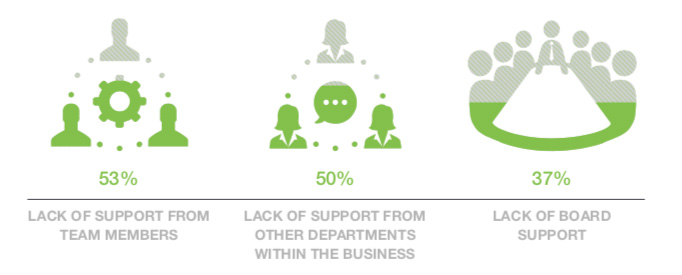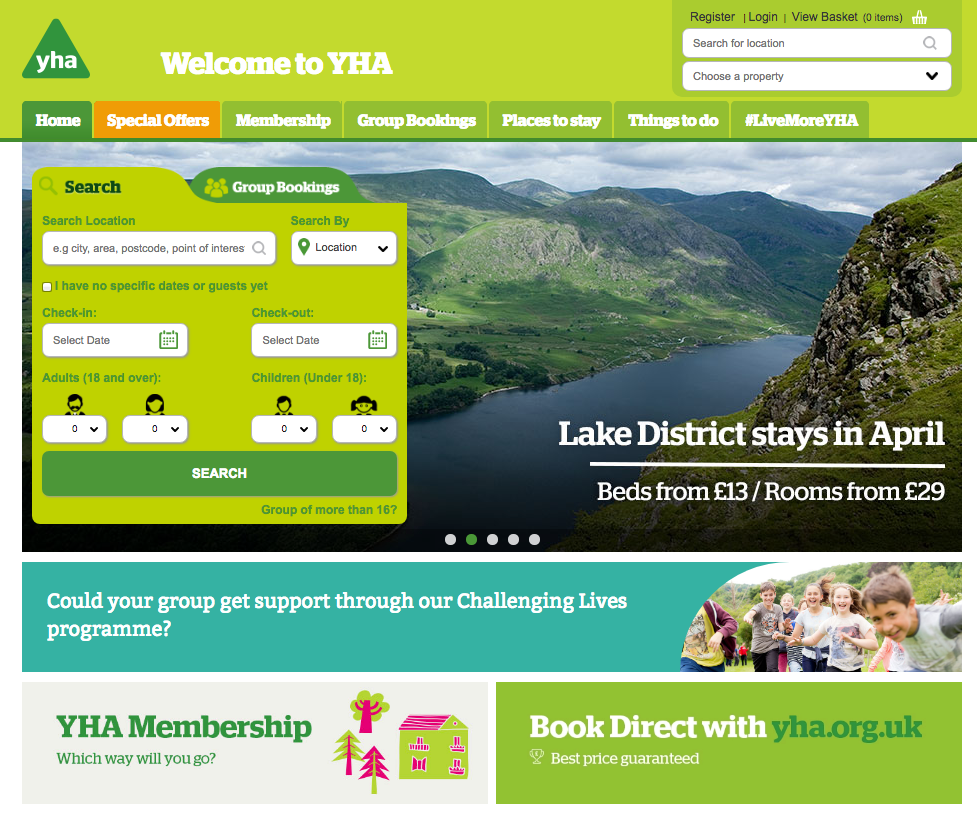Company ethos is holding back an effective digital strategy, new research from Acquia has shown. Half of the heads of digital polled claim they lack support from team members and those in other departments and 37% say even their own boards are adding to this digital marketing barrier. So how can they move on from the ‘old way of doing things’ to drive their businesses more effectively? Certainly, they need to jump on modern trends like personalisation and multi-channel marketing by learning about their website visitors – and they should keep content up to date so they can generate more engagement and thus more revenue. Sylvia Jensen has more detailed advice:
We are in the middle of an era of digital disruption era. The vast majority of business leaders and marketing teams are talking publicly about their digital transformation efforts and how digital is now a central part of their corporate strategies. Indeed, research by Acquia shows that more than 80% of chief digital officers and chief information officers in large organisations claim digital is essential to their organisation’s operations and performance.
Of course, shifting a business to be a digital-first organisation comes with significant challenges — it’s why the concept of digital transformation exists and is such a widely discussed topic. Brands can’t just snap their fingers to realise their digital ambitions.
However, for all the talk about transformation and strategy, at some point the success of any digital strategy has to come down to execution. Increasingly, organisations are finding out that effective digital execution is now core to their overall business success.
So, the obvious question to ask is: are brands delivering on their digital promises?
Digital marketing barrier to change
Acquia’s research suggests that what has been written down in strategy documents may not necessarily be finding its way through into business reality quite as easily as you might imagine.
While 83% of digital professionals say that their strategy is fit for purpose, 65% also see implementing digital across the business as their number one strategic challenge. This clear, and perhaps surprising, contradiction highlights the nature of the execution challenge when it comes to digital transformation.
What though are the biggest barriers to executing on digital? The obvious answers might be a lack of budget or a lack of skills to successfully following through on strategies. And yet these factors are cited by surprisingly few digital leaders — only 36% state that lack of skills is a barrier and 21% say lack of budget is a problem.
Instead, heads of digital are becoming increasingly frustrated with their organisations’ culture towards digital. Half of the heads of digital we surveyed believe they lack digital strategy support from team members and other departments in the business. Worryingly, more than one in three (37%) say they lack support from their own board.
Why the culture problem matters
Why should there be a cultural resistance to digital in businesses? The difficulty of actually re-orientating a company may be part of the problem. The legacy technology most organisations have in place make executing a joined-up digital experience difficult — especially on a global level. If it’s too difficult, there is clearly a temptation to back slide into the old way of doing things rather than embracing change.
This unwillingness of the business as a whole to pull together is holding back progress. Moreover, the culture problem is having a profound effect on most organisations’ ability to jump on modern trends like personalisation and multi-channel marketing.
Not being able to execute on digital strategy is very much a downward spiral. Dabbling in digital that fails ultimately dissatisfies the board, which means less budget is put towards it and a disbelief in its ability to deliver ROI. But when done properly, digital execution has shown time and time again to be a huge revenue generator for businesses. Getting it right, therefore, is hugely important.
Getting it right needs commitment: case study
When it comes to getting it right it’s important to remember that it’s not about the size of your brand or your budget that will define success. Instead it’s about committing to transformation and your digital strategy.
 An example of that commitment is YHA, an 85-year-old charity that helps young people grow through travel. The company’s digital presence was confusing for customers and difficult to manage at the back end. YHA decided to completely overhaul its digital strategy by standardising its whole operation on a single content management system running on Drupal 8.
An example of that commitment is YHA, an 85-year-old charity that helps young people grow through travel. The company’s digital presence was confusing for customers and difficult to manage at the back end. YHA decided to completely overhaul its digital strategy by standardising its whole operation on a single content management system running on Drupal 8.
Initially, this enabled YHA to deliver a world-class customer experience on its web platforms, implement a consistent brand feel and experience across all of its touchpoints and simplifying management — freeing the marketing team to spin up new sites quickly and publish fresh content regularly. That has resulted in a 200% increase in traffic, which has generated more leads and bookings than ever before into YHA’s contact centre.
The company’s digital journey is not over though. The commitment to digital as a strategic priority means YHA can now push on with plans to develop an integrated mobile app, e-check-in, social media integration, gamification in-hostel digital experiences and much more.
Overcoming cultural resistance should be a business priority
YHA is a good example that it’s not always the brands you might expect that are making the biggest strides when it comes to digital transformation. But the lessons are simple: commit, pursue simplicity above all else and make sure you don’t close off opportunities for the future with your decisions now.
Overcoming cultural resistance in your organisation is key to creating a positive reinforcement in your digital activities — inspiring your board and senior management to pursue further innovation and more ambitious projects as you consistently show the value of digital.
And the importance of achieving this positive feedback loop cannot be underestimated. The reality is, companies need to fulfil on the promise of the strategies they develop. If they don’t, they will never bridge the gap between the hype they see trumpeted all around them and the real-world expectations of senior management. More importantly, they’ll fail to meaningfully connect with the fickle and demanding customers who enjoy unprecedented amounts of choice in the market.
Have an opinion on this article? Please join in the discussion: the GMA is a community of data driven marketers and YOUR opinion counts.







Leave your thoughts